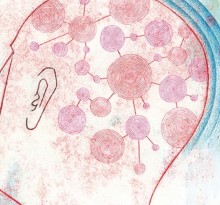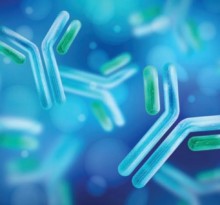A common food colorant could provide water purification on the cheap, thanks to work by a Tufts researcher
Originally written for Tufts Now news website
Mary Jane Shultz almost died.
When she was a few weeks old, she came down with a mysterious illness on her family’s farm in rural Minnesota. “At first, it was called ‘failure to thrive,’ ” Shultz says. “I just couldn’t gain weight, and was wasting away. The doctors couldn’t put their finger on it. But eventually, they tested our well, and figured out that it was the drinking water.”
As her doctors suspected, the farm’s well was too close to a cow feed lot, so light levels of biological waste and bacteria were leaching into the water supply. Her family started feeding her bottled water, and she gradually recovered.
Today, Shultz is a professor of chemistry in the School of Arts and Sciences, but she hasn’t forgotten about that well. Over the last few years, she’s been working on a method to make water purification easy on rural farms and in small towns and villages around the world.
Filtering debris such as leaves, silt or solid waste from water isn’t so difficult. But removing bacteria or harmful organic molecules like acetone or formaldehyde is another matter. Getting rid of those usually involves a chemical reaction—that’s where Shultz’s research comes in.
One of the most promising chemicals for small-scale water purification, she thinks, is titanium dioxide, or Ti02. It’s a molecule that most of us encounter every day. “It gives your toothpaste its white color. It gives creamy salad dressing its white color. It’s even in skim milk,” says Shultz, who recently was named a fellow of the American Association for the Advancement of Science, a title recognizing her contributions to the field of chemistry. “People eat tons of it, and it just passes through your body with—as far as we know—no effects whatsoever.”
A food colorant might seem an unlikely candidate to use to clean up water, but TiO2 has some unusual properties. “One thing it does well is absorb sunlight,” Shultz says, “which is basically energy.” In a process called “oxidization,” this extra energy helps TiO2 break down organic molecules that make up bacteria and other harmful organisms, turning them into benign gases such as carbon dioxide. Like all things in chemistry, it boils down to the movement of electrons from atom to atom.
Leaping Electrons
In the chemical world, all atoms strive for a sort of perfection: they generally want to fill their outermost “shell,” or energy tier, with electrons. Only a handful of elements form naturally with a complete outer shell—all the rest have to beg, borrow, or give away electrons to other atoms in order to have a filled top tier.
Mary Jane Shultz measures the effectiveness of titanium dioxide in small-scale water purification by blasting it with 1,000 watts of light. Photo: Kelvin Ma
Titanium dioxide is a product of this sort of diplomatic arrangement. A metal with four spare electrons, titanium attracts two oxygen atoms, each of which needs two electrons for its outermost shell. Sharing those electrons is a good deal for everyone involved: the oxygen atoms get the electrons they’re looking for, and the titanium atom finally has a place to unload its extras. Once the atoms find each other, the trio lives happily as a unit.
Sunlight, however, can shake up that arrangement. As titanium dioxide absorbs the sun’s energy, an electron “hole” opens up on one of its oxygen atoms. As that atom comes in contact with a passing organic molecule, such as harmful formaldehyde, it will quickly snatch an electron, breaking the molecule apart. The remaining atoms of the formaldehyde molecule pair with oxygen in the air and bubble off as gases like carbon dioxide.
“Titanium dioxide is a staging site for that transfer of electrons. It facilitates it. It’s the matchmaker,” says Shultz, who adds that this process could be a great way to safely rid water of harmful bugs.
A Long-Lasting Purifier
In theory, the idea of purifying water with TiO2 is simple, elegant and potentially cheap. But there’s a catch: right now, Shultz says, it’s not efficient enough. “TiO2 has an efficiency of around two percent [in liquid water]. That means it’s only able to use two percent of the energy it absorbs from the sun, so oxidization happens slowly. At that rate, it’d take more than a week to purify a day’s worth of water.” To treat water at a more practical speed, Shultz wants to bring titanium dioxide’s efficiency up to 15 percent. If she can reach that benchmark, she says, she’ll be able to purify about 70 gallons, the average per person U.S. daily water use, in just eight hours.
To do this, Shultz is working on “doping” the TiO2—adding other metals such as iron to the outside of each tiny clump of titanium dioxide. She thinks doping will help speed oxidization by directing electron movement once the process has started. So far, the results are promising, and Shultz thinks her lab is only three to four years away from hitting 15 percent or above.
Eventually, Shultz envisions pumping water through solar panel-like boxes, mounted high on rooftops. The inside of each panel would be lined with tiny fibers coated in particles of TiO2 just a few nanometers across.
At that size, the TiO2 particles are totally transparent, so light could get through them, says Shultz. Water would contact the TiO2 as it flowed through the device, which would eliminate the harmful substances.
Since the titanium dioxide doesn’t degrade in the process, it would never need to be replaced, so the panel could purify water for years with little maintenance. For rural communities and villages around the world, that could mean the difference between life and death.
“If you looked at a glass of water from where I was growing up, it looked like perfectly fine water. It didn’t smell all that great, but it looked fine,” says Shultz. “It’s the small things you can’t see that get you.”







